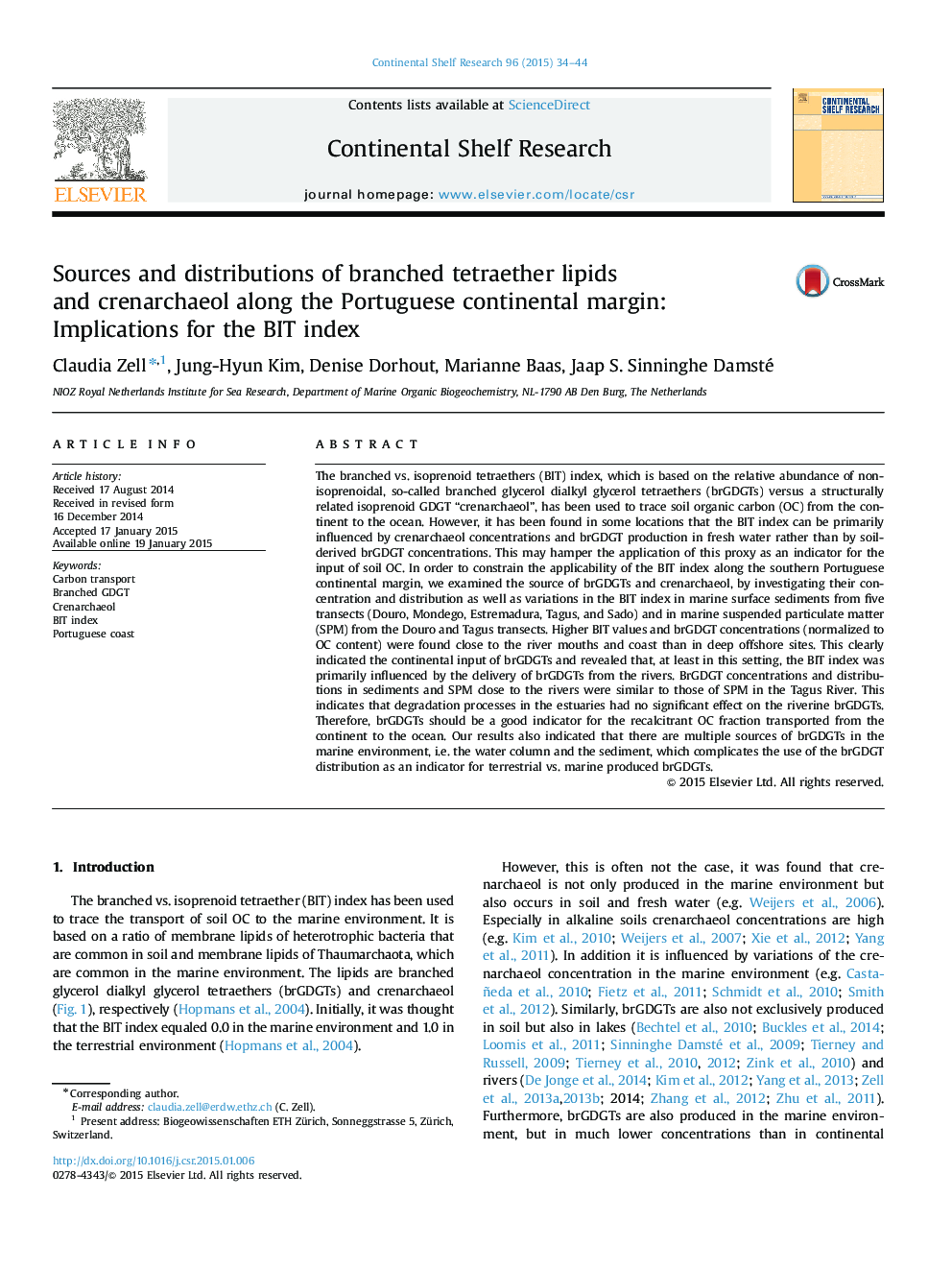| Article ID | Journal | Published Year | Pages | File Type |
|---|---|---|---|---|
| 4531761 | Continental Shelf Research | 2015 | 11 Pages |
•The applicability of the BIT index was examined along the Portuguese coast.•BrGDGT concentrations increased close to the river mouth or coast.•Variation in crenarchaeol concentration did not have a major influence on the BIT index.•BrGDGTs are derived from multiple sources.
The branched vs. isoprenoid tetraethers (BIT) index, which is based on the relative abundance of non-isoprenoidal, so-called branched glycerol dialkyl glycerol tetraethers (brGDGTs) versus a structurally related isoprenoid GDGT “crenarchaeol”, has been used to trace soil organic carbon (OC) from the continent to the ocean. However, it has been found in some locations that the BIT index can be primarily influenced by crenarchaeol concentrations and brGDGT production in fresh water rather than by soil-derived brGDGT concentrations. This may hamper the application of this proxy as an indicator for the input of soil OC. In order to constrain the applicability of the BIT index along the southern Portuguese continental margin, we examined the source of brGDGTs and crenarchaeol, by investigating their concentration and distribution as well as variations in the BIT index in marine surface sediments from five transects (Douro, Mondego, Estremadura, Tagus, and Sado) and in marine suspended particulate matter (SPM) from the Douro and Tagus transects. Higher BIT values and brGDGT concentrations (normalized to OC content) were found close to the river mouths and coast than in deep offshore sites. This clearly indicated the continental input of brGDGTs and revealed that, at least in this setting, the BIT index was primarily influenced by the delivery of brGDGTs from the rivers. BrGDGT concentrations and distributions in sediments and SPM close to the rivers were similar to those of SPM in the Tagus River. This indicates that degradation processes in the estuaries had no significant effect on the riverine brGDGTs. Therefore, brGDGTs should be a good indicator for the recalcitrant OC fraction transported from the continent to the ocean. Our results also indicated that there are multiple sources of brGDGTs in the marine environment, i.e. the water column and the sediment, which complicates the use of the brGDGT distribution as an indicator for terrestrial vs. marine produced brGDGTs.
